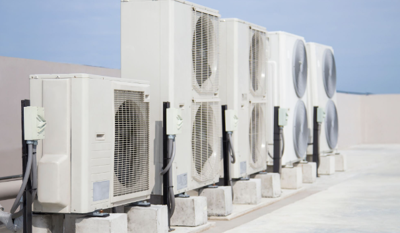
Gone are the days when heating and air conditioning systems were an afterthought. In today's luxury homes, comfort extends beyond temperature—it includes air quality, humidity control, and seamless integration with interior design. Affluent homeowners now expect HVAC systems to deliver a level of performance that mirrors the opulence of their surroundings, without drawing attention to themselves. This evolving demand forces HVAC companies to rethink their traditional approach and step into the role of holistic climate curators.
Moreover, the luxury market is pushing the boundaries of what an HVAC system can be. It’s no longer acceptable to simply provide a solution that works; it must work quietly, efficiently, and aesthetically. Systems must be fine-tuned to accommodate everything from rare art collections that require specific humidity levels to expansive floor-to-ceiling glass that impacts indoor temperature control. HVAC professionals serving this clientele are redefining their value proposition—not just as technicians, but as architects of invisible comfort.
Collaborating with Designers and Architects: Form Meets Function
As stated by an hvac company, one of the biggest challenges HVAC companies face in the luxury space is marrying functionality with flawless design. High-end residences often feature open-concept layouts, vaulted ceilings, and materials like natural stone or wood, all of which present airflow and ducting challenges. As a result, HVAC contractors must now collaborate closely with interior designers, architects, and builders from the earliest stages of a project to ensure systems are integrated smoothly and discreetly.
These collaborations are vital for preserving the visual integrity of a luxury space. Concealed ductwork, flush vents, and climate zones that maintain consistent temperatures across sprawling floor plans are just a few demands that HVAC teams must meet. This shift toward interdisciplinary partnerships requires more than technical know-how—it demands design sensitivity and a keen understanding of spatial harmony. The HVAC professional of today must speak the language of both engineering and aesthetics.
Smart Homes Demand Smarter HVAC Solutions
With the rise of smart home ecosystems, HVAC systems are no longer standalone units—they’re integral components of intelligent living environments. Homeowners now expect to control indoor climate through mobile apps, voice commands, or AI-driven automation. For HVAC companies, this means investing in cutting-edge technology and ensuring that systems can communicate seamlessly with platforms like Google Nest, Amazon Alexa, or proprietary automation solutions.
This integration brings its own set of challenges. Not only must the HVAC system be technologically compatible, but it also has to anticipate and respond to user preferences, occupancy patterns, and external weather conditions. In high-end homes, these smart features must be intuitive and unobtrusive, adding convenience without complexity. HVAC companies now find themselves at the intersection of comfort, data, and user experience—transforming from mechanical service providers into technology consultants.
Climate Extremes and the Pressure for Sustainable Innovation
As climate change intensifies, even luxury homeowners are feeling its effects—longer heatwaves, colder winters, and increased air pollution are reshaping what comfort means. HVAC companies are now facing a dual challenge: delivering maximum performance while minimizing environmental impact. In response, many are incorporating green technologies like geothermal heating, solar-powered systems, and high-efficiency heat pumps into their offerings.
Additionally, clients are becoming more eco-conscious and expect their homes to reflect those values. Requests for carbon-neutral solutions, indoor air purification systems to combat wildfire smoke, and smart thermostats that optimize energy usage are becoming more common. HVAC companies that fail to adapt risk being left behind in a market that increasingly prioritizes sustainability without compromising luxury. Staying ahead requires not only innovation but also the ability to educate affluent clients on the long-term value of energy-efficient solutions.
Talent Shortages in a Tech-Savvy Industry
As HVAC systems grow more sophisticated, the industry faces a significant talent gap. The demand for technicians who understand both mechanical engineering and digital integration is soaring, but the workforce isn't keeping up. For luxury HVAC projects, the bar is even higher—clients expect white-glove service, timely installations, and technicians who can engage professionally and problem-solve on the spot.
To bridge this gap, forward-thinking HVAC firms are investing in training programs and recruiting individuals with backgrounds in IT, architecture, and design. The new generation of HVAC professionals must be as comfortable navigating software dashboards as they are handling refrigerant lines. In luxury settings, communication skills are equally crucial, as technicians often interact directly with clients or their representatives. The challenge lies not only in finding skilled labor but in cultivating a workforce that can deliver both technical excellence and a premium client experience.
The Rise of Invisible Luxury
The HVAC industry is undergoing a quiet revolution—one that is being shaped by the expectations of a discerning, tech-savvy, and environmentally conscious clientele. In luxury homes, air is no longer just air; it is curated, conditioned, and controlled with precision. HVAC companies that wish to thrive in this space must embrace their evolving role as partners in design, technology, and wellness. They are not merely installing machines—they are crafting invisible luxury.
By aligning with architects, adopting smart home innovations, and leading the charge in sustainable comfort, HVAC professionals have the opportunity to stand at the forefront of modern living. The future belongs to those who can think beyond ducts and vents, and instead, create seamless experiences where luxury breathes effortlessly into every room. In the age of smart homes and climate extremes, comfort is a craft—and HVAC companies are the new artisans.




(0) comments
We welcome your comments
Log In
Post a comment as Guest
Keep it Clean. Please avoid obscene, vulgar, lewd, racist or sexually-oriented language.
PLEASE TURN OFF YOUR CAPS LOCK.
Don't Threaten. Threats of harming another person will not be tolerated.
Be Truthful. Don't knowingly lie about anyone or anything.
Be Nice. No racism, sexism or any sort of -ism that is degrading to another person.
Be Proactive. Use the 'Report' link on each comment to let us know of abusive posts.
Share with Us. We'd love to hear eyewitness accounts, the history behind an article.